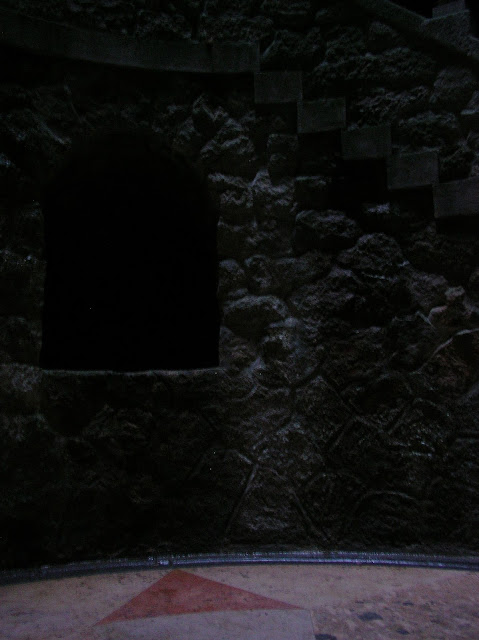For three days a year, people can book an appointment to visit Roman catacombs under Lisbon's streets. In order to prepare for this, staff for the city museums use pumps for the month prior to get as much water as possible out. We were alerted to this by a Portuguese friend of ours and through trial and error managed to book an appointment.
This is the entrance to the catacombs. You have to wait when trolleys are going by.
Its a tight fit and water still trickles around here and there.
Archaeologists have determined that the purpose of this structure was to prevent the sinking of buildings above it. This area of Lisbon, in its early early days, had a river running nearby this location. Phoenician ruins have been uncovered under Roman ones in the area. Structures like these were built by the Romans throughout their empire, near river sources, so that water running underneath this structure and moving around earth would evenly affect the structure above it. Thus the structure above would remain intact.

Ahhh, you say, why is there water in it now? As the city changed and developed over time, several wells were sunk over the city. The wells going into this Roman structure had much cleaner water because it contained the rain water and not the river or ground water. They were also reported to have healing powers for the body and eyes. Well, after the 1755 earthquake, this structure was discovered in the rebuilding. It was noted, drawings made and then closed up. Because of the structural damage, water began to seep in. Eventually the wells going to this structure was closed up and forgotten.
You can see the residue of how high the water normally goes.
For people expecting art or imposing ancient ruins, this is not the tour for them. For engineers, historians or people amazed at the ways civilizations make improvements that better the people they represent then this is the place to visit. But only three days a year. I was impressed.























































